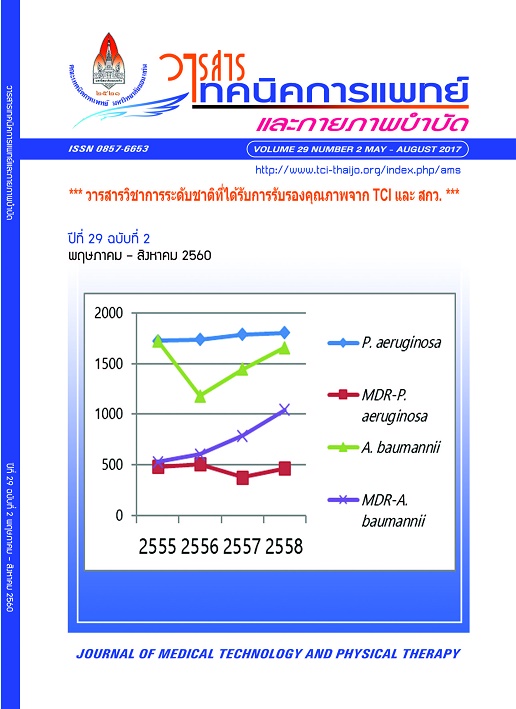Correlations between reaching distance among directions of the modified star excursion balance test in amateur athletes after lateral ankle sprain
Main Article Content
Abstract
The modified star excursion balance test (the modified SEBT) has been used to determine dynamic balance impairment after lateral ankle sprain (LAS). However, the testing procedure is likely redundancy in the direction of measurement and time-consuming. The aim of the study was to determine the correlations between reaching distance among directions of the modified SEBT in amateur athletes after LAS in an attempt to decrease the number of directions of the modified SEBT. Twenty-six amateur athletes (17 males, 9 females) with current LAS more than 6 months but lesser than 3 years participated in the present study. All participants performed the modified SEBT including anteromedial, medial and posteromedial directions in both limbs. Pearson’s correlation coefficient (r) was used to demonstrate the correlations between reaching distance among directions of the modified SEBT within and between limbs. The Pearson’s correlation coefficient among the reaching distance of all directions of the modified SEBT was very strongfor reaching distance normalized by leg length (r=0.90-0.97,p<0.01)and normalized by height (r=0.91-0.98, p<0.01), respectively in both limbs. The Pearson’s correlation coefficient among the reaching distance normalized by leg length and height for all directions was strong to very strong (r=0.88-0.99, p<0.01)in both limbs. The present result demonstrated that thedirections of the modified SEBT are likely redundancy and could be decreased the number of testing direction in determining dynamic balance impairment after LAS.


